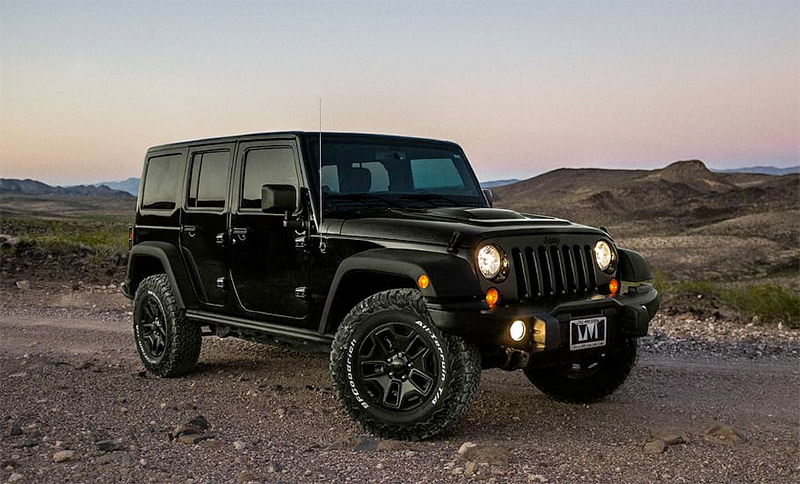When it comes to off-road vehicles, few names evoke the rugged spirit of adventure quite like Jeep. But how long can a Jeep Wrangler—or any Jeep for that matter—truly last? Is it a vehicle you can hand down to the next generation, or will it meet its maker sooner than you’d like? With a lineage that stretches back to World War II, the Jeep has garnered a reputation for durability and longevity. Still, the question remains: how many miles can a Jeep Wrangler last? Let’s dive into the intricacies of Jeep lifespan, exploring what factors play a pivotal role in the longevity of these remarkable machines.
To set the stage, we must first understand that the lifespan of a Jeep Wrangler can vary widely. On average, many Jeep enthusiasts boast that their Wranglers have easily surpassed the 200,000-mile mark. Some exceptional examples even flirt with 300,000 miles, largely depending on the level of care and maintenance provided. The Jeep community is rife with tales of owners who have lovingly enhanced their vehicles to withstand the test of time. Yet, this beckons a playful question: Are you up for the challenge of nurturing your Jeep to its full potential?
Before rolling up your sleeves, let’s break down the factors that significantly impact the longevity of a Jeep Wrangler. First of all, we have the engine and drivetrain. The iconic 3.6-liter V6 engine, standard in many Wrangler models, has proven to be a hardy workhorse. However, the way it is treated can drastically affect its endurance. Regular oil changes and scheduled maintenance are non-negotiable. Neglecting these essentials might lead to detrimental consequences, reducing your Wrangler’s lifespan considerably.
Alongside engine care is the influence of terrain. Driving a Jeep Wrangler is an invitation to explore trails, rocky hills, and muddy paths. While that exhilarating off-road experience enhances your love for the vehicle, remember that frequent off-road adventures can lead to wear and tear that road-bound commuters simply don’t encounter. Tires, brakes, and suspension components face more strain, prompting the need for vigilant maintenance. Are you prepared to invest time and resources into ensuring your Jeep withstands the rigors of rugged adventures?
Now, let’s consider the role of materials and design. Jeep has crafted its vehicles with a remarkable penchant for resilience. Stainless steel exhaust systems, corrosion-resistant paint, and reinforced body frames all contribute to a Jeep’s durability. However, weather can play an equally significant role in a Jeep’s lifespan. Harsh winters, salty coastal air, or constant exposure to the blazing sun can accelerate rust and deterioration. Protective measures, such as frequent waxing or applying rust inhibitors, can extend your Wrangler’s life. Will you rise to the occasion and adopt such preventive measures?
Another aspect that cannot be overlooked is the driving habits of the owner. Are you gentle on the gas pedal, or do you like to push the limits? Sudden accelerations, aggressive braking, and general reckless driving can reduce the lifespan of any vehicle, especially a Jeep. By adopting a more composed driving style, you can enhance the longevity of your Wrangler significantly. This leads us to ponder: are you ready to embrace a more mindful driving approach to maximize your Jeep’s potential?
Moreover, the vehicle’s usage plays a consequential role in its lifespan. If your daily driver has become a mud-loving monster, you might find yourself facing repairs while your pavement-pounding peers sail along with minimal fuss. Structuring a use-case plan for your Jeep helps balance off-road adventures with day-to-day function. Striking this balance is crucial; a well-respected machine is more likely to serve you faithfully over the years. Considering this, how will you ideally allocate your Jeep’s purpose?
To keep a Jeep Wrangler thriving, considerations about upgrades and modifications also come into play. While many consider modifications purely aesthetic, functional performance upgrades can significantly impact longevity. Stronger axles, enhanced cooling systems, and improved suspension systems can help your Jeep survive the long haul, particularly in tough terrains. But upgrades often come with costs—will you decide to invest in performance or stick with the stock features?
Finally, community and support can influence Jeep longevity, too. Being part of a Jeep owners’ group opens channels for advice, shared experiences, and even hands-on assistance. You aren’t alone in your journey—there are knowledgeable enthusiasts eager to share tips for tackling common issues or boosting your vehicle’s lifespan. In the end, how will you engage with the Jeep community to bolster your ownership experience?
As you reflect on these elements, remember that a Jeep Wrangler can indeed last for years, but achieving that doesn’t come passively. It requires proactive care, informed decisions, and a willingness to go the extra mile. Maybe embrace that playful challenge of surpassing 200,000 miles—or even 300,000! Every drive on the trail, every mile on the highway, becomes a testament to not just your adventure spirit but also your commitment to crafting a life as spirited as your Jeep. So, go ahead—ignite the passion, nurture your ride, and let your Jeep adventure be one for the ages!
